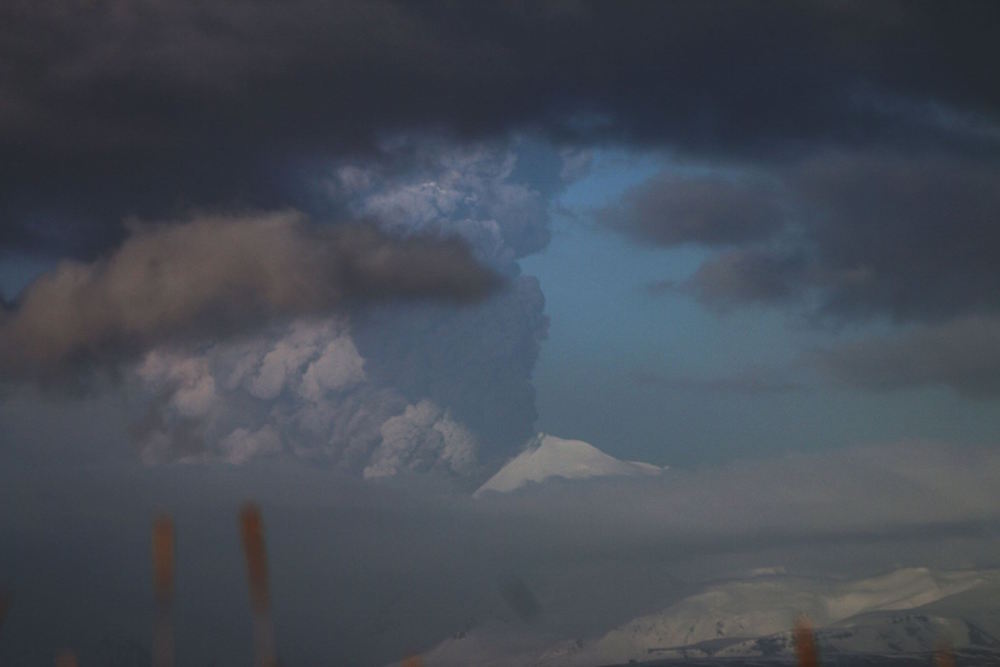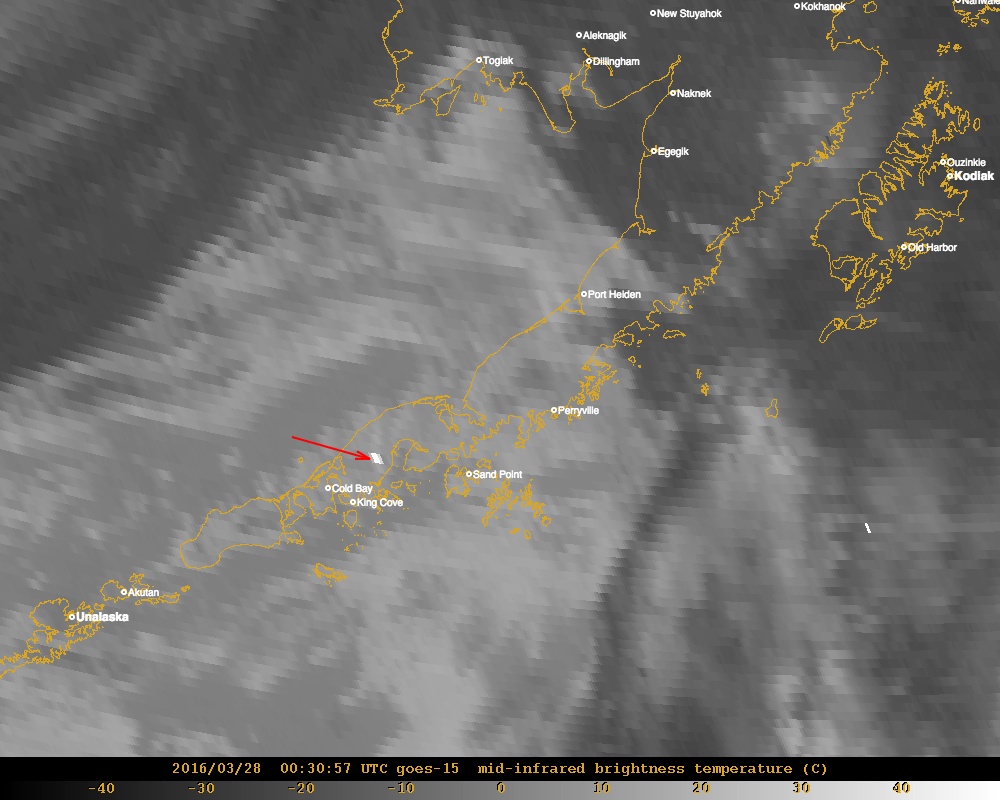Alaska Volcano Erupts, Spewing Ash 20,000 Feet into the Air

A snow- and ice-covered volcano located in Alaska's Aleutian Islands erupted Sunday (March 27), spewing a cloud of ash about 20,000 feet (6,000 meters) into the sky, the Alaska Volcano Observatory reported.
The volcano — called Pavlof for the Russian name "Paul" or "St. Paul" — erupted at about 4 p.m. local time (8 p.m. EDT) Sunday. The area also had elevated seismic activity at 3:53 p.m. local time, according to the U.S. Geological Survey (USGS). In response, the Alaska Volcano Observatory raised the volcano alert level to "warning," and the aviation color code to "red," meaning that an eruption is imminent or underway and putting high levels of ash into the atmosphere. Perhaps as a result, there were no reported injuries during or following the eruption.
A nearby pilot reported that the erupting volcano sent an ash cloud high into the air. As of 4:18 p.m. local time Sunday, the ash was moving northward from the volcano, the USGS said. [Countdown: History's Most Destructive Volcanoes]
At 8,261 feet (2,518 m), Pavlof Volcano is one of Alaska's tallest mountains. The mountain is located on the southwestern part of the Alaskan peninsula, about 592 miles (952 kilometers) southwest of Anchorage.
This isn't the volcano's first outburst. Pavlof has erupted more than 40 times since 1790, making it one of the most consistently active volcanoes in the Aleutian arc, the USGS reported. Past eruptions include several month-long events characterized by sporadic Strombolian lava — mildly explosive lava named after the Italian Stromboli volcano, which often has these types of eruptions.
Pavlof Volcano has also had ash clouds plume as high as 49,000 feet (15,000 m) into the air, the USGS said. During a 2013 eruption, its ash plume reached as high as 27,000 feet (8,200 m) above sea level and reached as far as 310 miles (about 500 km) away from the volcano's base.
Some photographers snapped photos of Sunday's ashy eruption from Cold Bay, Pavlof's nearest community, which is located about 37 miles (60 km) southwest of the volcano.
Get the world’s most fascinating discoveries delivered straight to your inbox.
Northeast of Pavlof sits its "twin," a 7,028-foot-tall (2,142 m) volcano called Pavlof Sister. But unlike its brother, Pavlof Sister hasn't had any known eruptions since 1762, according to Encyclopedia Britannica.
Follow Laura Geggel on Twitter @LauraGeggel. Follow Live Science @livescience, Facebook & Google+. Original article on Live Science.

Laura is the managing editor at Live Science. She also runs the archaeology section and the Life's Little Mysteries series. Her work has appeared in The New York Times, Scholastic, Popular Science and Spectrum, a site on autism research. She has won multiple awards from the Society of Professional Journalists and the Washington Newspaper Publishers Association for her reporting at a weekly newspaper near Seattle. Laura holds a bachelor's degree in English literature and psychology from Washington University in St. Louis and a master's degree in science writing from NYU.



